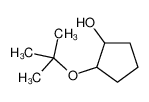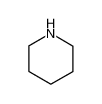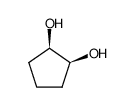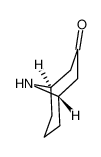1.Identification
1.1 GHS Product identifier
| Product name | glutaraldehyde |
|---|
1.2 Other means of identification
| Product number | - |
|---|---|
| Other names | pentane-1,3,5-tricarboxylic acid trimethyl ester |
1.3 Recommended use of the chemical and restrictions on use
| Identified uses | For industry use only. Food additives -> Flavoring Agents |
|---|---|
| Uses advised against | no data available |
1.4 Supplier's details
| Company | MOLBASE (Shanghai) Biotechnology Co., Ltd. |
|---|---|
| Address | Floor 4 & 5, Building 12, No. 1001 North Qinzhou Road, Xuhui District, Shanghai, China |
| Telephone | +86(21)64956998 |
| Fax | +86(21)54365166 |
1.5 Emergency phone number
| Emergency phone number | +86-400-6021-666 |
|---|---|
| Service hours | Monday to Friday, 9am-5pm (Standard time zone: UTC/GMT +8 hours). |
2.Hazard identification
2.1 Classification of the substance or mixture
Acute toxicity - Oral, Category 3
Skin corrosion, Category 1B
Skin sensitization, Category 1A
Acute toxicity - Inhalation, Category 2
Specific target organ toxicity – single exposure, Category 3
Respiratory sensitization, Category 1
Hazardous to the aquatic environment, short-term (Acute) - Category Acute 1
Hazardous to the aquatic environment, long-term (Chronic) - Category Chronic 2
2.2 GHS label elements, including precautionary statements
| Pictogram(s) |     |
|---|---|
| Signal word | Danger |
| Hazard statement(s) | H410 Very toxic to aquatic life with long lasting effects H301 Toxic if swallowed H314 Causes severe skin burns and eye damage H317 May cause an allergic skin reaction H330 Fatal if inhaled H335 May cause respiratory irritation H334 May cause allergy or asthma symptoms or breathing difficulties if inhaled |
| Precautionary statement(s) | |
| Prevention | P264 Wash ... thoroughly after handling. P270 Do not eat, drink or smoke when using this product. P260 Do not breathe dust/fume/gas/mist/vapours/spray. P280 Wear protective gloves/protective clothing/eye protection/face protection. P261 Avoid breathing dust/fume/gas/mist/vapours/spray. P272 Contaminated work clothing should not be allowed out of the workplace. P271 Use only outdoors or in a well-ventilated area. P284 [In case of inadequate ventilation] wear respiratory protection. P273 Avoid release to the environment. |
| Response | P301+P310 IF SWALLOWED: Immediately call a POISON CENTER/doctor/… P321 Specific treatment (see ... on this label). P330 Rinse mouth. P301+P330+P331 IF SWALLOWED: Rinse mouth. Do NOT induce vomiting. P303+P361+P353 IF ON SKIN (or hair): Take off immediately all contaminated clothing. Rinse skin with water [or shower]. P363 Wash contaminated clothing before reuse. P304+P340 IF INHALED: Remove person to fresh air and keep comfortable for breathing. P310 Immediately call a POISON CENTER/doctor/… P305+P351+P338 IF IN EYES: Rinse cautiously with water for several minutes. Remove contact lenses, if present and easy to do. Continue rinsing. P302+P352 IF ON SKIN: Wash with plenty of water/... P333+P313 If skin irritation or rash occurs: Get medical advice/attention. P362+P364 Take off contaminated clothing and wash it before reuse. P320 Specific treatment is urgent (see ... on this label). P312 Call a POISON CENTER/doctor/…if you feel unwell. P342+P311 If experiencing respiratory symptoms: Call a POISON CENTER/doctor/... P391 Collect spillage. |
| Storage | P405 Store locked up. P403+P233 Store in a well-ventilated place. Keep container tightly closed. |
| Disposal | P501 Dispose of contents/container to ... |
2.3 Other hazards which do not result in classification
none
3.Composition/information on ingredients
3.1 Substances
| Chemical name | Common names and synonyms | CAS number | EC number | Concentration |
|---|---|---|---|---|
| glutaraldehyde | glutaraldehyde | 111-30-8 | none | 100% |
4.First-aid measures
4.1 Description of necessary first-aid measures
General advice
Consult a physician. Show this safety data sheet to the doctor in attendance.
If inhaled
Fresh air, rest. Artificial respiration may be needed. Refer for medical attention.
In case of skin contact
Remove contaminated clothes. Rinse and then wash skin with water and soap.
In case of eye contact
First rinse with plenty of water for several minutes (remove contact lenses if easily possible), then refer for medical attention.
If swallowed
Rinse mouth. Give one or two glasses of water to drink. Refer for medical attention .
4.2 Most important symptoms/effects, acute and delayed
Contact with liquid causes severe irritation of eyes and irritation of skin. Chemical readily penetrates skin in harmful amounts. Ingestion causes irritation of mouth and stomach. (USCG, 1999)
4.3 Indication of immediate medical attention and special treatment needed, if necessary
Immediate first aid: Ensure that adequate decontamination has been carried out. If patient is not breathing, start artificial respiration, preferably with a demand-valve resuscitator, bag-valve-mask device, or pocket mask, as trained. Perform CPR as necessary. Immediately flush contaminated eyes with gently flowing water. Do not induce vomiting. If vomiting occurs, lean patient forward or place on left side (head-down position, if possible) to maintain an open airway and prevent aspiration. Keep patient quiet and maintain normal body temperature. Obtain medical attention. /Aldehydes and Related Compounds/
5.Fire-fighting measures
5.1 Extinguishing media
Suitable extinguishing media
Suitable extinguishing media: Use water spray, alcohol-resistant foam, dry chemical or carbon dioxide.
5.2 Specific hazards arising from the chemical
Literature sources indicate that this chemical is nonflammable.
5.3 Special protective actions for fire-fighters
Wear self-contained breathing apparatus for firefighting if necessary.
6.Accidental release measures
6.1 Personal precautions, protective equipment and emergency procedures
Use personal protective equipment. Avoid dust formation. Avoid breathing vapours, mist or gas. Ensure adequate ventilation. Evacuate personnel to safe areas. Avoid breathing dust. For personal protection see section 8.
6.2 Environmental precautions
Personal protection: chemical protection suit including self-contained breathing apparatus. Do NOT let this chemical enter the environment. Collect leaking and spilled liquid in sealable containers as far as possible. Wash away remainder with plenty of water.
6.3 Methods and materials for containment and cleaning up
Accidental release measures. Personal precautions, protective equipment and emergency procedures: Use personal protective equipment. Avoid breathing vapors, mist or gas. Ensure adequate ventilation. Evacuate personnel to safe areas.; Environmental precautions: Prevent further leakage or spillage if safe to do so. Do not let product enter drains. Discharge into the environment must be avoided. Methods and materials for containment and cleaning up: Soak up with inert absorbent material and dispose of as hazardous waste. Keep in suitable, closed containers for disposal.
7.Handling and storage
7.1 Precautions for safe handling
Avoid contact with skin and eyes. Avoid formation of dust and aerosols. Avoid exposure - obtain special instructions before use.Provide appropriate exhaust ventilation at places where dust is formed. For precautions see section 2.2.
7.2 Conditions for safe storage, including any incompatibilities
Separated from food and feedstuffs.Keep container tightly closed in a dry and well-ventilated place. Containers which are opened must be carefully resealed and kept upright to prevent leakage. Recommended storage temperature: -20°C. Store under inert gas. Air sensitive.
8.Exposure controls/personal protection
8.1 Control parameters
Occupational Exposure limit values
Recommended Exposure Limit: Ceiling value: 0.2 ppm (0.8 mg/cu m).
Biological limit values
no data available
8.2 Appropriate engineering controls
Handle in accordance with good industrial hygiene and safety practice. Wash hands before breaks and at the end of workday.
8.3 Individual protection measures, such as personal protective equipment (PPE)
Eye/face protection
Safety glasses with side-shields conforming to EN166. Use equipment for eye protection tested and approved under appropriate government standards such as NIOSH (US) or EN 166(EU).
Skin protection
Wear impervious clothing. The type of protective equipment must be selected according to the concentration and amount of the dangerous substance at the specific workplace. Handle with gloves. Gloves must be inspected prior to use. Use proper glove removal technique(without touching glove's outer surface) to avoid skin contact with this product. Dispose of contaminated gloves after use in accordance with applicable laws and good laboratory practices. Wash and dry hands. The selected protective gloves have to satisfy the specifications of EU Directive 89/686/EEC and the standard EN 374 derived from it.
Respiratory protection
Wear dust mask when handling large quantities.
Thermal hazards
no data available
9.Physical and chemical properties
| Physical state | Clear to yellowish liquid |
|---|---|
| Colour | Colorless liquid |
| Odour | Pungent odor |
| Melting point/ freezing point | 255°C(lit.) |
| Boiling point or initial boiling point and boiling range | 97°C/24mmHg(lit.) |
| Flammability | Noncombustible LiquidNot combustible. |
| Lower and upper explosion limit / flammability limit | no data available |
| Flash point | 51°C(lit.) |
| Auto-ignition temperature | 225°C |
| Decomposition temperature | 187-189°C |
| pH | Mildly acidic (50% solution) |
| Kinematic viscosity | no data available |
| Solubility | In water:miscible |
| Partition coefficient n-octanol/water (log value) | log Kow = -0.33 |
| Vapour pressure | 0.583mmHg at 25°C |
| Density and/or relative density | 1.06 |
| Relative vapour density | 3.4 (Air = 1) |
| Particle characteristics | no data available |
10.Stability and reactivity
10.1 Reactivity
no data available
10.2 Chemical stability
Stable under recommended storage conditions.
10.3 Possibility of hazardous reactions
NonflammableGLUTARALDEHYDE may discolor on exposure to air. It polymerizes on heating. This chemical is incompatible with strong oxidizing agents. It polymerizes in the presence of water.
10.4 Conditions to avoid
no data available
10.5 Incompatible materials
Incompatible materials: Strong bases, strong oxidizing agents, strong acids.
10.6 Hazardous decomposition products
When heated to decomposition it emits acrid smoke and irritating fumes.
11.Toxicological information
Acute toxicity
- Oral: LD50 Rat oral 134 mg/kg
- Inhalation: LC50 Rat inhalation 5000 ppm/4 hr exposure
- Dermal: no data available
Skin corrosion/irritation
no data available
Serious eye damage/irritation
no data available
Respiratory or skin sensitization
no data available
Germ cell mutagenicity
no data available
Carcinogenicity
A4; Not classifiable as a human carcinogen. /Glutaraldehyde/
Reproductive toxicity
no data available
STOT-single exposure
no data available
STOT-repeated exposure
no data available
Aspiration hazard
no data available
12.Ecological information
12.1 Toxicity
- Toxicity to fish: LC50; Species: Lepomis macrochirus (Bluegill sunfish); Concentration: 22.6 ppm for 96 hr /Conditions of bioassay not specified in source examined/ /50% glutaraldehyde
- Toxicity to daphnia and other aquatic invertebrates: EC50; Species: Daphnia magna (Water Flea) age <24 hr; Conditions: freshwater, static; Concentration: 14600 ug/L for 48 hr (11000-18000 ug/L); Effect: intoxication, immobilization /50% purity
- Toxicity to algae: EC50; Species: Pseudokirchneriella subcapitata (Green Algae); Conditions: freshwater, static; Concentration: 310 ug/L for 96 hr (90-1040 ug/L); Effect: population, abundance /50.7% purity
- Toxicity to microorganisms: no data available
12.2 Persistence and degradability
AEROBIC: Glutaraldehyde, present at 100 mg/L, reached 59% of its theoretical BOD in 4 weeks using an activated sludge inoculum at 30 mg/L in the Japanese MITI test(1). Using OECD Guideline 301C (Ready biodegradability: Modified MITI Test (I)), glutaraldehyde reached 74% of its theoretical BOD in 28 days and 80% DOC in 15 days with classified the compound as readily biodegradable(2). Glutaraldehyde was found to be readily biodegradable using OECD Guideline 301D (Closed Bottle Test)(2). In a DOC die-away test, glutaradehyde, present at 25 mg/L, showed 83% degradation in 5 days using a sewage inoculum(3). Glutaraldehyde, present at 8.3 mg/L, degraded 60% in 28 days using sewage inoculum in a CO2 evolution test(3). In a closed bottle test, glutaraldehyde present at 2.0 mg/L, degraded 64% in 28 days using a Polyseed inoculum(3). A higher biodegradability with a short lag time was observed when the glutaraldehyde concentrations in the test systems were low (<2 mg/L) than when the concentrations were high (>8 mg/L). Since bacterial inhibition for glutaraldehyde occurs at about 5 mg/L, the lower biodegradation rates observed in studies where high concentrations of glutaraldehyde were used were likely due to inhibition of the inoculum(3). In a closed bottle test using seawater as inoculum, glutaraldehyde showed 73% degradation in 28 days(3). The major metabolite of glutaraldehyde produced by microbes in an aerobic sediment-river water system was carbon dioxide, with glutaric acid formed as an intermediate in the water phase(3). The calculated pseudo-first-order half-life of glutaraldehyde catabolism in water (based on the loss of the parent compound) under aerobic conditions was 10.6 hours(3). A soil degradation study using a loamy sand soil and initial glutaraldehyde concentration of 10 ppm observed a pseudo-first order biodegradation half-life of 1.7 days due primarily to soil microorganisms(4).
12.3 Bioaccumulative potential
An estimated BCF of 3 was calculated for glutaraldehyde(SRC), using a log Kow of -0.33(1) and a regression-derived equation(2). According to a classification scheme(3), this BCF suggests the potential for bioconcentration in aquatic organisms is low(SRC).
12.4 Mobility in soil
Aqueous solutions of [14C] glutaraldehyde in 0.01 M calcium chloride were prepared at concentrations of 0.51, 1.0, 2.5, 5.0, and 10.3 g/L and used to determine the adsorption/desorption characteristics of glutaraldehyde in various soil types according to FIFRA 163-1 guidelines(1). Measured Koc values were 210, 500, 340, 460, and 120 in sandy loam, silty clay loam, silt loam, loamy sand, and sediment, respectively(1). Batch adsorption studies determined Koc values of 22.2, 18.9 and 5.1 in New York loam, Nebraska silt loam and Highview clay loam soils respectively(3). According to a classification scheme(2), these Koc values suggest that glutaraldehyde is expected to have very high to moderate mobility in soil.
12.5 Other adverse effects
no data available
13.Disposal considerations
13.1 Disposal methods
Product
The material can be disposed of by removal to a licensed chemical destruction plant or by controlled incineration with flue gas scrubbing. Do not contaminate water, foodstuffs, feed or seed by storage or disposal. Do not discharge to sewer systems.
Contaminated packaging
Containers can be triply rinsed (or equivalent) and offered for recycling or reconditioning. Alternatively, the packaging can be punctured to make it unusable for other purposes and then be disposed of in a sanitary landfill. Controlled incineration with flue gas scrubbing is possible for combustible packaging materials.
14.Transport information
14.1 UN Number
| ADR/RID: UN2927 | IMDG: UN2927 | IATA: UN2927 |
14.2 UN Proper Shipping Name
| ADR/RID: TOXIC LIQUID, CORROSIVE, ORGANIC, N.O.S. |
| IMDG: TOXIC LIQUID, CORROSIVE, ORGANIC, N.O.S. |
| IATA: TOXIC LIQUID, CORROSIVE, ORGANIC, N.O.S. |
14.3 Transport hazard class(es)
| ADR/RID: 6.1 | IMDG: 6.1 | IATA: 6.1 |
14.4 Packing group, if applicable
| ADR/RID: II | IMDG: II | IATA: II |
14.5 Environmental hazards
| ADR/RID: yes | IMDG: yes | IATA: yes |
14.6 Special precautions for user
no data available
14.7 Transport in bulk according to Annex II of MARPOL 73/78 and the IBC Code
no data available
15.Regulatory information
15.1 Safety, health and environmental regulations specific for the product in question
| Chemical name | Common names and synonyms | CAS number | EC number |
|---|---|---|---|
| glutaraldehyde | glutaraldehyde | 111-30-8 | none |
| European Inventory of Existing Commercial Chemical Substances (EINECS) | Listed. | ||
| EC Inventory | Listed. | ||
| United States Toxic Substances Control Act (TSCA) Inventory | Listed. | ||
| China Catalog of Hazardous chemicals 2015 | Listed. | ||
| New Zealand Inventory of Chemicals (NZIoC) | Listed. | ||
| Philippines Inventory of Chemicals and Chemical Substances (PICCS) | Listed. | ||
| Vietnam National Chemical Inventory | Listed. | ||
| Chinese Chemical Inventory of Existing Chemical Substances (China IECSC) | Listed. | ||
16.Other information
Information on revision
| Creation Date | Aug 10, 2017 |
|---|---|
| Revision Date | Aug 10, 2017 |
Abbreviations and acronyms
- CAS: Chemical Abstracts Service
- ADR: European Agreement concerning the International Carriage of Dangerous Goods by Road
- RID: Regulation concerning the International Carriage of Dangerous Goods by Rail
- IMDG: International Maritime Dangerous Goods
- IATA: International Air Transportation Association
- TWA: Time Weighted Average
- STEL: Short term exposure limit
- LC50: Lethal Concentration 50%
- LD50: Lethal Dose 50%
- EC50: Effective Concentration 50%
References
- IPCS - The International Chemical Safety Cards (ICSC), website: http://www.ilo.org/dyn/icsc/showcard.home
- HSDB - Hazardous Substances Data Bank, website: https://toxnet.nlm.nih.gov/newtoxnet/hsdb.htm
- IARC - International Agency for Research on Cancer, website: http://www.iarc.fr/
- eChemPortal - The Global Portal to Information on Chemical Substances by OECD, website: http://www.echemportal.org/echemportal/index?pageID=0&request_locale=en
- CAMEO Chemicals, website: http://cameochemicals.noaa.gov/search/simple
- ChemIDplus, website: http://chem.sis.nlm.nih.gov/chemidplus/chemidlite.jsp
- ERG - Emergency Response Guidebook by U.S. Department of Transportation, website: http://www.phmsa.dot.gov/hazmat/library/erg
- Germany GESTIS-database on hazard substance, website: http://www.dguv.de/ifa/gestis/gestis-stoffdatenbank/index-2.jsp
- ECHA - European Chemicals Agency, website: https://echa.europa.eu/













![6543-04-0 spectrum, 2-[3-(1,3-dioxolan-2-yl)propyl]-1,3-dioxolane](http://saasimg.molbase.net/mol_command/066c9cdc6728421c81fab137a12f6836.png)




